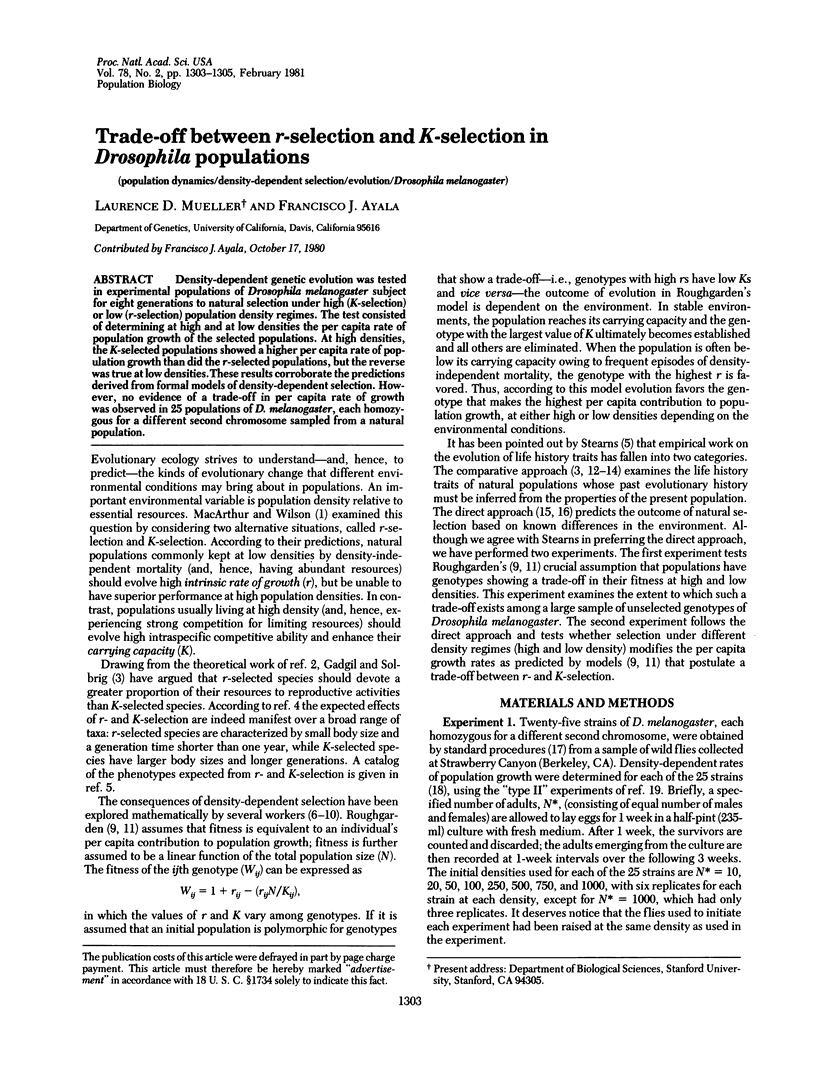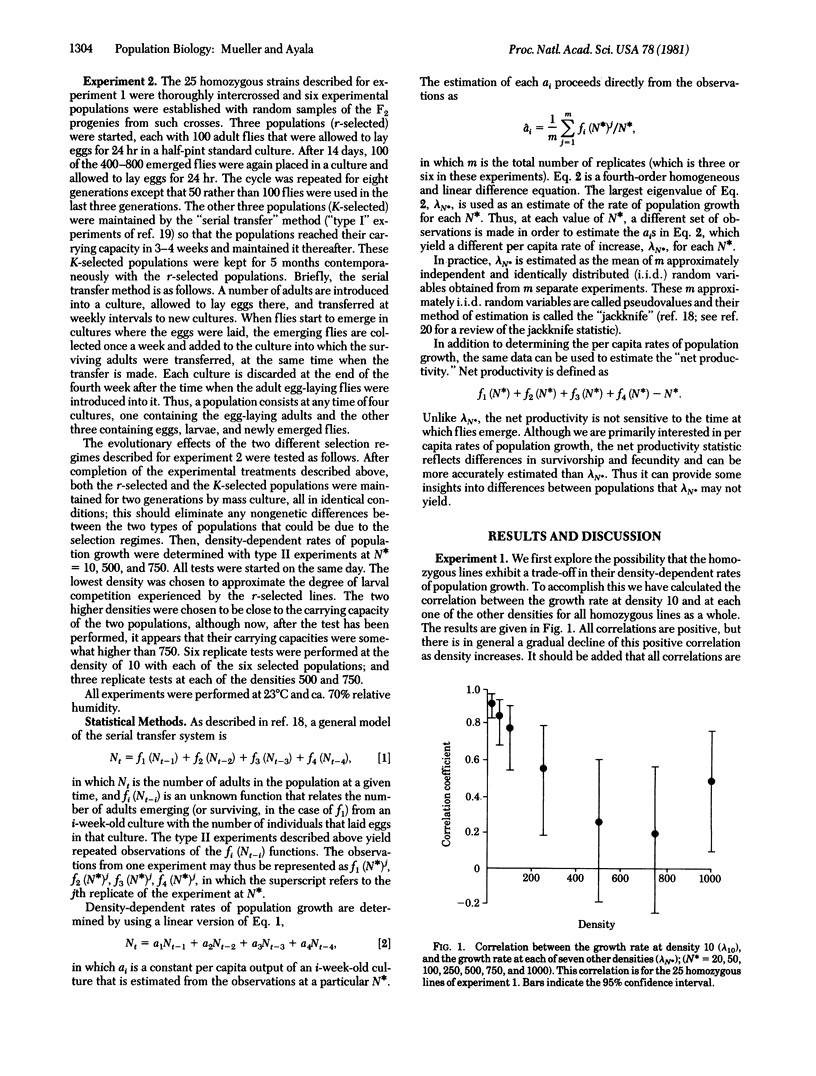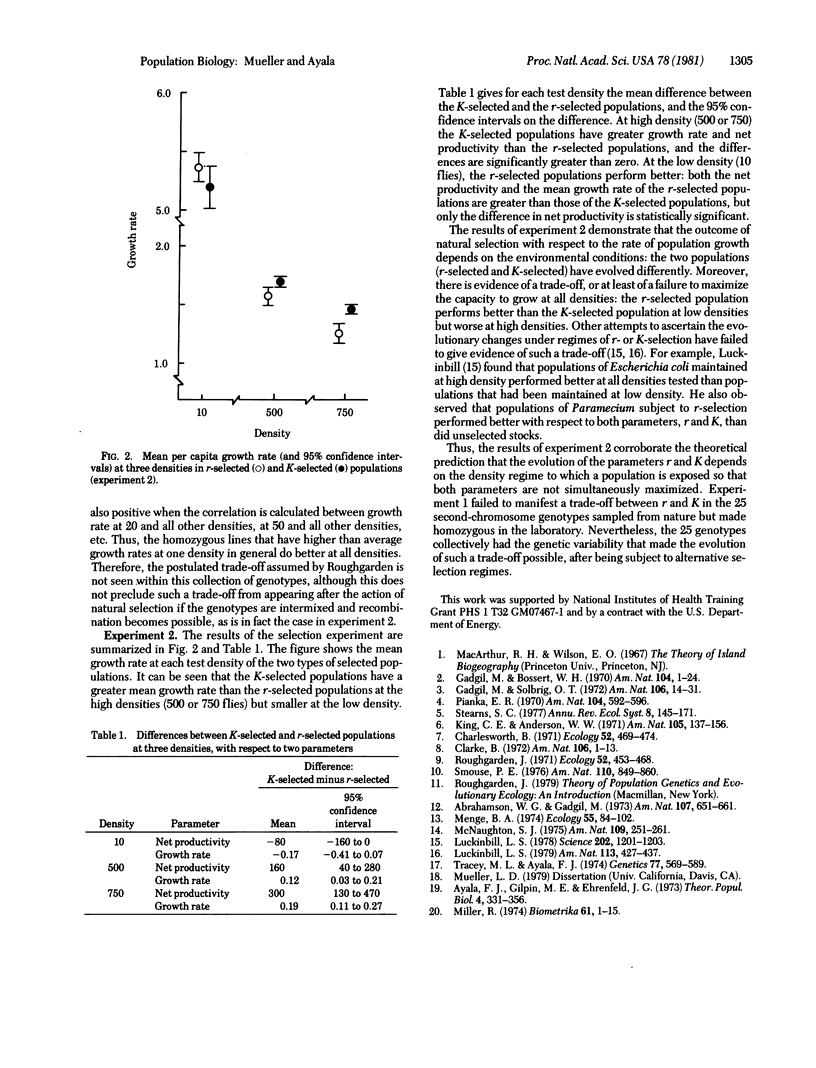Abstract
Density-dependent genetic evolution was tested in experimental populations of Drosophila melanogaster subject for eight generations to natural selection under high (K-selection) or low (r-selection) population density regimes. The test consisted of determining at high and at low densities the per capita rate of population growth of the selected populations. At high densities, the K-selected populations showed a higher per capita rate of population growth than did r-selected populations, but the reverse was true at low densities. These results corroborate the predictions derived from formal models of density-dependent selection. However, no evidence of a trade-off in per capita rate of growth was observed in 25 populations of D. melanogaster, each homozygous for a different second chromosome sampled from a natural population.
Keywords: population dynamics, density-dependent selection, evolution, Drosophila melanogaster
Full text
PDF


Selected References
These references are in PubMed. This may not be the complete list of references from this article.
- Ayala F. J., Gilpin M. E., Ehrenfeld J. G. Competition between species: theoretical models and experimental tests. Theor Popul Biol. 1973 Sep;4(3):331–356. doi: 10.1016/0040-5809(73)90014-2. [DOI] [PubMed] [Google Scholar]
- Luckinbill L. S. r and K Selection in Experimental Populations of Escherichia coli. Science. 1978 Dec 15;202(4373):1201–1203. doi: 10.1126/science.202.4373.1201. [DOI] [PubMed] [Google Scholar]
- Tracey M. L., Ayala F. J. Genetic load in natural populations: is it compatible with the hypothesis that many polymorphisms are maintained by natural selection? Genetics. 1974 Jul;77(3):569–589. doi: 10.1093/genetics/77.3.569. [DOI] [PMC free article] [PubMed] [Google Scholar]


